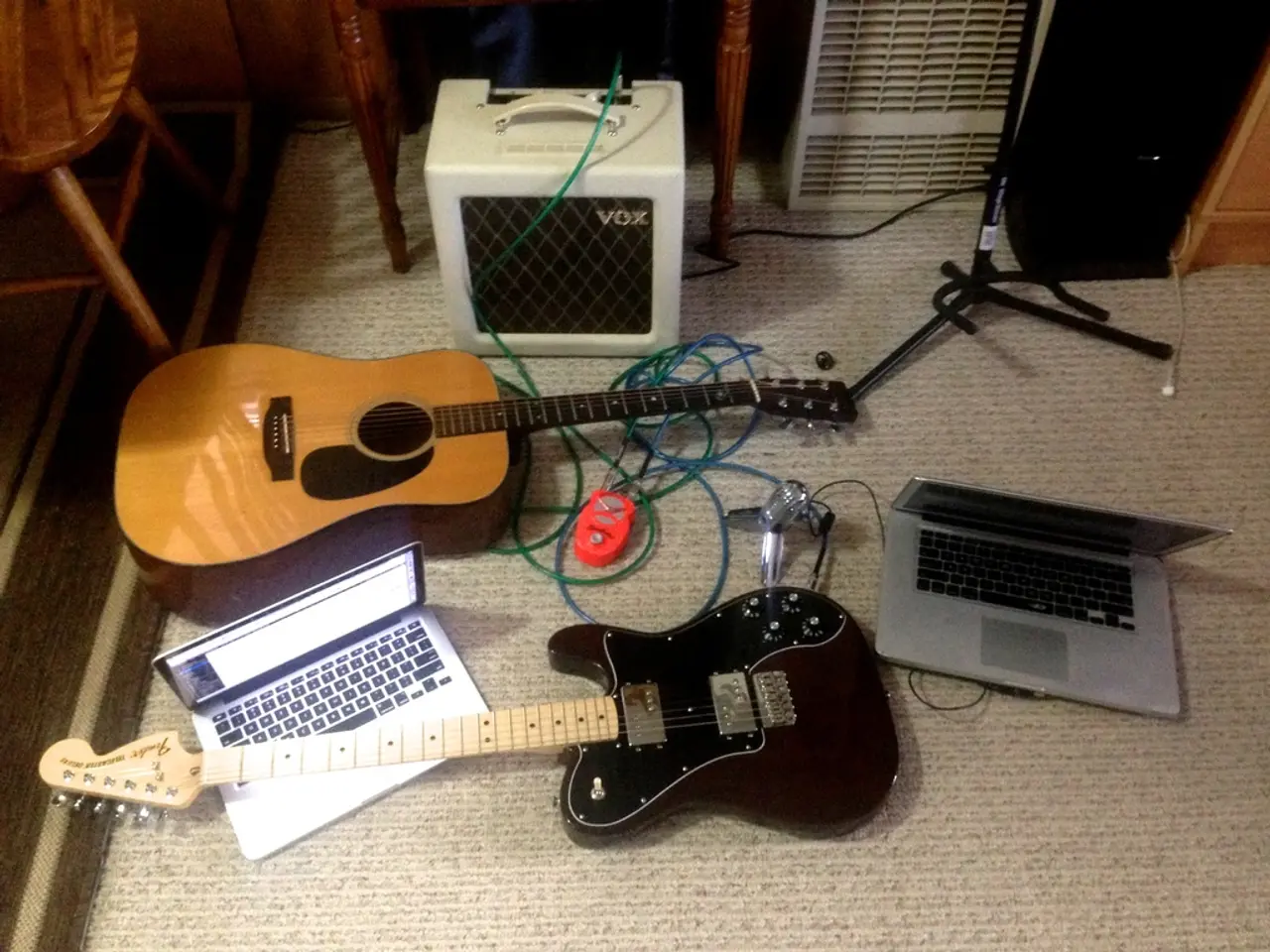Exploring the Might of Audio Vibrations: Factors Impacting Subwoofer Potency
When it comes to enhancing your audio setup, a powerful subwoofer is a must-have. Here are key factors to consider for choosing a subwoofer that delivers clear, deep, and distortion-free bass.
Power Handling
Prioritize the RMS wattage rating, which indicates the continuous power the subwoofer can handle without distortion or damage. This reflects sustainable performance and sound quality. The peak wattage shows the maximum short bursts of power the subwoofer can manage but is less critical for overall quality.
Driver Size
Larger drivers (such as 12" or 15") typically deliver more powerful, deeper bass but require more space. Choose driver size based on available room and desired bass impact.
Enclosure Type
Subwoofer enclosure design (sealed, ported, or passive radiator) affects sound characteristics and efficiency. For example, ported or passive radiator enclosures can provide extended low-frequency output without larger size, influencing tonal quality and output level.
Room and Placement
The room’s dimensions, furniture layout, and acoustics greatly impact subwoofer performance. Proper placement optimizes bass distribution and prevents boomy or uneven sound response.
Adjustable Controls and Integration Features
Features like adjustable crossovers, gain control, phase adjustment, and smart calibration help blend the subwoofer naturally with main speakers for a smooth and full sound.
Compatibility with System
Ensure the subwoofer matches your amplifier/receiver in power handling and has compatible connection options (e.g., LFE input). Proper frequency crossover settings let the subwoofer handle low frequencies effectively without overlap or gaps.
Tuning and Calibration
Proper tuning—setting crossover frequency, gain, and phase—is critical to avoid muddy bass and to achieve tight, musical low-frequency reproduction. A well-tuned subwoofer enhances impact and blending rather than overpowering.
Size and Aesthetics
Choose a subwoofer that fits your space and visual preferences. Modern models may have compact designs with technologies (like passive radiators) that still deliver strong bass without being bulky.
Other Considerations
Built-in amplifiers are optimized for the specific driver of a powered subwoofer, simplifying setup and yielding excellent performance due to tailored tuning. Incorporating soft furnishings can absorb excessive resonance, improving sound quality. A higher sensitivity rating means that the subwoofer requires less power to produce the same sound level, enhancing its overall performance.
Wireless Connectivity and Efficiency
Wireless subwoofers offer flexible placement options and seamless integration into home audio setups without sacrificing sound quality. Subwoofer efficiency refers to how well a subwoofer converts power into sound. Placing a subwoofer in a corner can enhance the bass response due to sound waves bouncing off walls. The cone of a subwoofer should be made from rigid and lightweight materials.
Acoustic Treatment
Installing acoustic panels or bass traps can help manage sound waves, leading to a cleaner audio experience, especially in larger rooms.
By considering these factors, you can ensure your subwoofer delivers clear, deep, and distortion-free bass that integrates well with your overall audio setup for the best listening experience.
[1] Subwoofer Power Handling: RMS vs. Peak Watts [2] Subwoofer Placement Guide [3] How to Choose the Best Subwoofer for Your Home Audio System [4] Best Compact Subwoofers for Small Spaces [5] How to Tune a Subwoofer for the Best Bass
- To ensure the subwoofer delivers a clear, deep, and distortion-free bass that perfectly complements your home theater system, consider factors such as power handling, driver size, enclosure type, room and placement, adjustable controls and integration features, compatibility with your system, tuning and calibration, size and aesthetics, wireless connectivity and efficiency, and acoustic treatment.
- When performing listening tests, pay close attention to the sound quality of different gadgets and technologies, focusing on the subwoofer's ability to deliver powerful, deep bass without distortion, while also considering its integration with your home theater system for a seamless and enjoyable listening experience.




